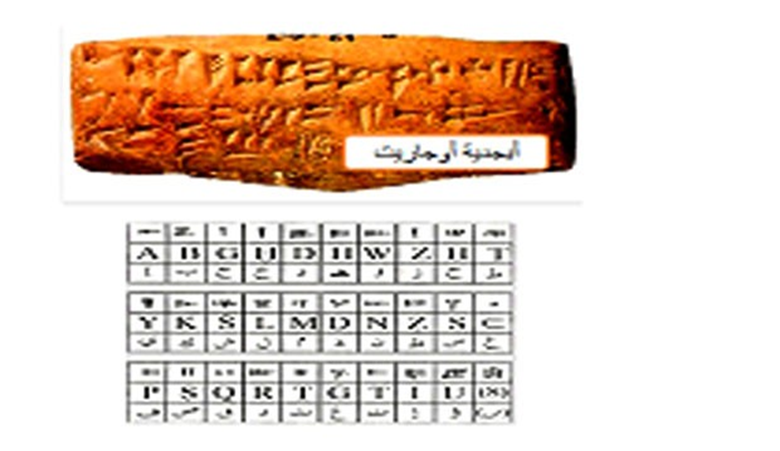The oldest cuneiform alphabet in the world is called Ugarit or Ugarit

Damascus-SANA
Archaeological finds and linguistic studies document that the Ugarit alphabet or “Ugarit” is the oldest cuneiform alphabetic writing system in the world.
The inscriptions discovered at the archaeological site of Ras al-Shamra and Ras Ibn Hani confirm the existence of schools teaching reading and writing in many languages, such as Sumerian, Akkadian in its Middle Babylonian branch, Cypriot-Minoan, Hittite cuneiform, and Hurrian cuneiform, and the preparation of translators, and that the king, princes, and the rest of the members of the ruling family learned to read and write in the Ugaritic language, which remained a local language. Spoken only in the Kingdom of Ugarit.
Historian Dr. Mahmoud Al-Sayyid, reader of ancient written inscriptions at the General Directorate of Antiquities and Museums, said to the SANA Miscellaneous Bulletin that at the beginning of the thirteenth century BC, the Syrians invented a cuneiform writing system that was much easier to learn and use than the Sumerian and Akkadian syllabic with its Babylonian and Assyrian branches. It is the Ugaritic cuneiform alphabet writing system, which is the oldest system. A cuneiform alphabet book in the world with an integrated grammatical system.
Al-Sayyid adds that the cuneiform writing system consists of 30 alphabetical cuneiform signs or symbols, 27 of which are consonant and the remaining three symbols are phonetic. The Ugarit alphabet formed the basic rule for the creation and emergence of the Phoenician alphabet, which was invented in 1000 BC, the Aramaic alphabet, and other alphabets that were derived from Phoenician and Aramaic, such as Hebrew, Moabite, and Ammonite. Greek, Nabataean, Palmyra, Syriac, South Arabic, Safaic, and North Arabic.

Al-Sayyid confirmed that the name of the alphabet, from a documented linguistic point of view, is “Ugarit” and not Ugarit, as the general public and some researchers in the field of language and archaeology say, and a number of media outlets, books, and published research, because the student wrote down the name in all the pottery figures that indicate or mention the name of the kingdom in the form Next or “J” R” T” and not or “G” R” T” In addition to there being a big difference in shape between the letter J and the letter Ghain, the word Ujar also means “field” while the word Ugar has no meaning in the language dictionary. Ugaritic and therefore the old name Ugarit must be corrected and replaced with the word Ugarit.
Source: websites

